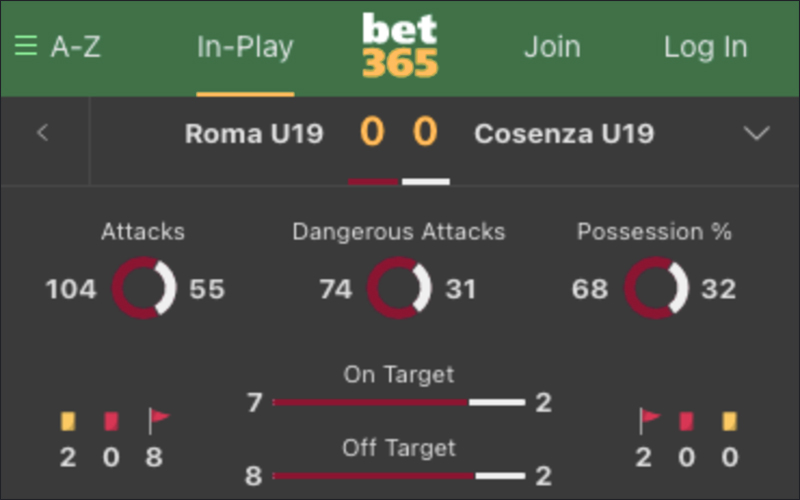In-play betting, also known as live betting, is a form of sports betting where wagers are placed on events during a sports game or event. It allows bettors to react and adjust their bets based on the unfolding events, such as goals scored, penalties, or other developments.
Computation of in-play betting odds and payouts involves several key factors:
1. Real-time information: In-play betting requires access to up-to-date and accurate information about the game or event. This includes the current score, time remaining, player injuries, weather conditions, and other relevant data. Betting operators employ specialized software and algorithms to rapidly capture and process this information.
2. Probability modeling: Bookmakers analyze the real-time information to calculate the probabilities of different outcomes occurring during the game or event. These probabilities are then used to generate fair and competitive odds for various in-play betting markets. Probability modeling requires a sophisticated understanding of the sport or event, historical data, and mathematical algorithms.
3. Market liquidity: The liquidity of the in-play betting market is vital for successful computation. It ensures enough volume and depth of bets are being placed to facilitate fair odds and efficient payouts. Strong market liquidity also helps prevent manipulation and ensures that odds accurately reflect the actual probabilities.
4. Risk management: In-play betting carries inherent risks due to the game’s dynamic nature or event. Bookmakers employ risk management strategies to ensure that they can cover potential losses and maintain their profitability. This involves continuously monitoring and adjusting odds, setting maximum bet limits, and managing their overall exposure to particular outcomes.
5. Payout calculations: Once a bet is placed and the outcome of the in-play event is determined, the computation of payouts takes place. Payouts are typically determined by multiplying the amount wagered by the odds offered for the selected outcome. The bookmaker’s commission, known as the vigorish or “vig,” is also factored into the calculation, ensuring that the operator makes a profit regardless of the outcome.
It’s important to note that in-play betting requires a rapid and efficient technological infrastructure, as the odds and markets can change rapidly based on developments in the game. Additionally, responsible gambling practices should always be followed, and betting should only be done within one’s means.
Example of in-play betting in a soccer (football) match:
Let’s say there’s a match between Team A and Team B. Before the start of the game, the pre-match odds for Team A to win are 2.00, the odds for a draw are 3.50, and the odds for Team B to win are 2.50.
Team A takes an early lead by scoring a goal during the game. This prompts the bookmaker to adjust the in-play odds accordingly. Now, the in-play odds for Team A to win might decrease to 1.50, the odds for a draw might increase to 4.00, and the odds for Team B to win might increase to 3.00.
Team A continues to dominate as the game progresses, creating several scoring opportunities. The bookmaker may keep adjusting the in-play odds to reflect Team A’s increased likelihood of winning. For example, the odds for Team A to win could decrease further to 1.20, the odds for a draw could increase to 6.00, and the odds for Team B to win could rise to 5.00.
At this point, a bettor can analyze the in-play odds and decide which outcome to wager on. If the bettor believes that Team A will maintain their lead and win the game, they might decide to place a bet on Team A at odds of 1.20. If they are confident that the match will end in a draw despite Team A’s lead, they may choose to bet on a draw at odds of 6.00. Alternatively, if the bettor thinks that Team B will stage a comeback, they may bet on Team B at odds of 5.00.
Once the game ends and the outcome is determined, the payouts are calculated based on the odds when the bet was placed. The amount wagered is multiplied by the odds, and the winnings are paid out accordingly, minus the bookmaker’s commission (vig).
It’s important to note that odds and markets can change rapidly in in-play betting, so bettors must make quick decisions and be aware of the risks involved. Additionally, in-play betting requires a reliable and fast platform to ensure the accuracy of odds and the timely execution of bets.
- Understanding the Basics of All-Up Betting June 11, 2024
- Understanding the Basics of Moneyline Betting June 1, 2024
- The Middle Bets Advantage: How to Make Smart Financial Decisions April 18, 2024
- Elevate Your Betting Game with Bet Builders Strategy April 12, 2024
- money line bet for begginers April 1, 2024
- Baseball bet types formula April 1, 2024
- Teasers bet complete formula March 21, 2024
- Straight bets payout March 21, 2024
- Parlay betting formula March 21, 2024
- Exchange betting fundamental March 15, 2024
